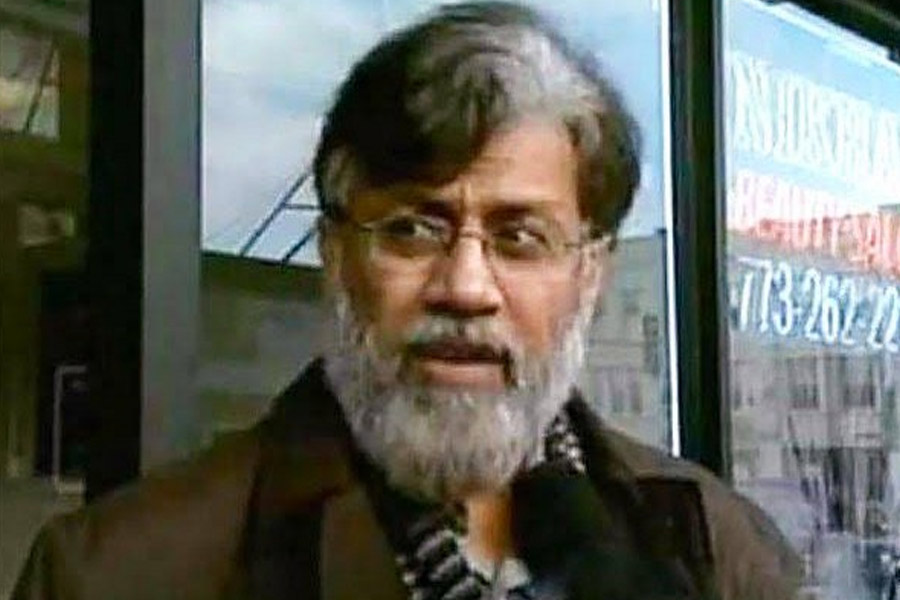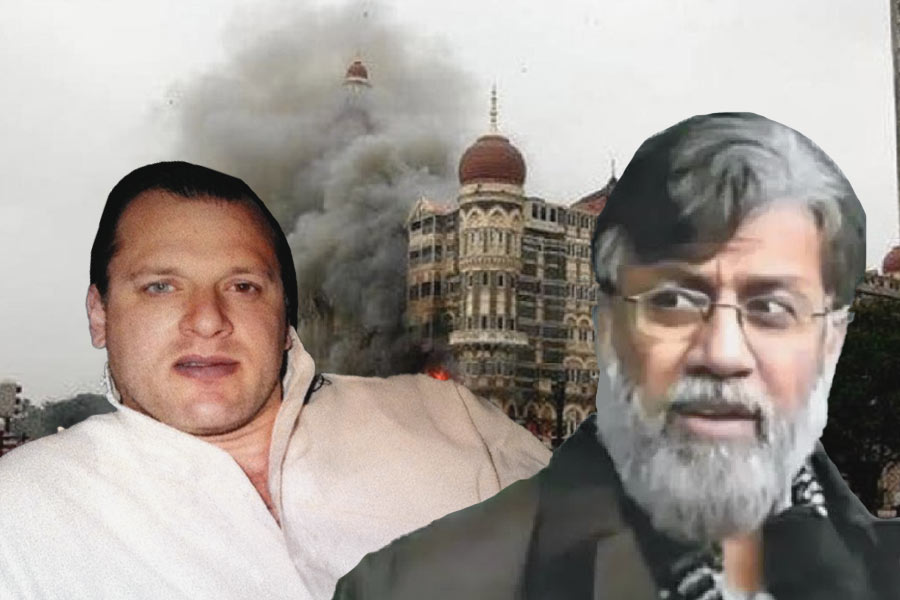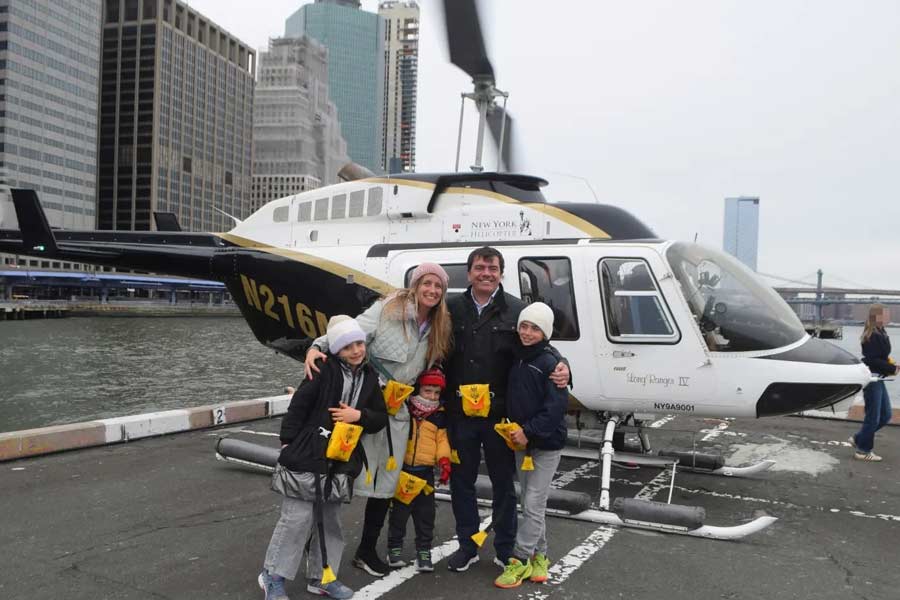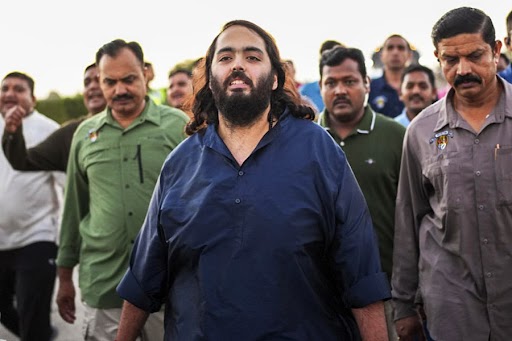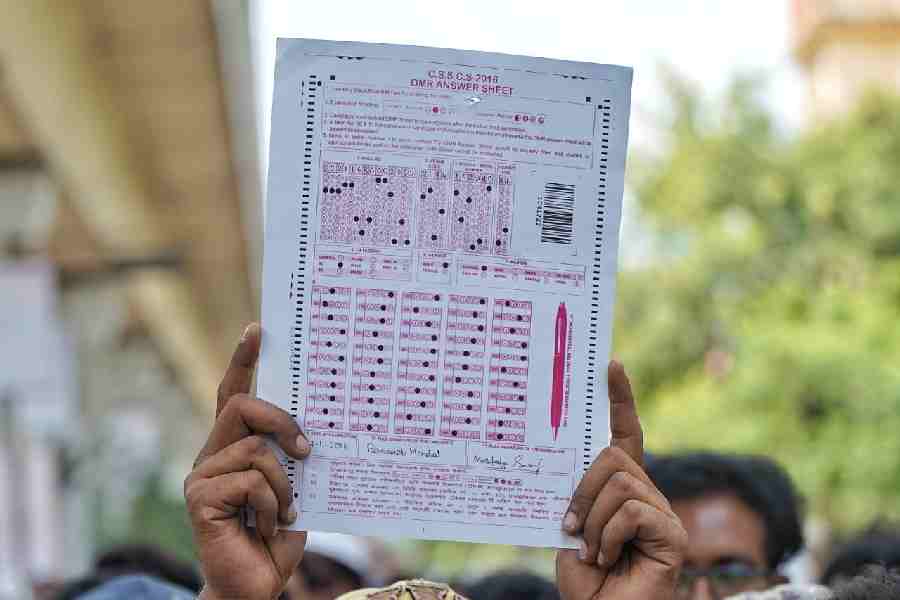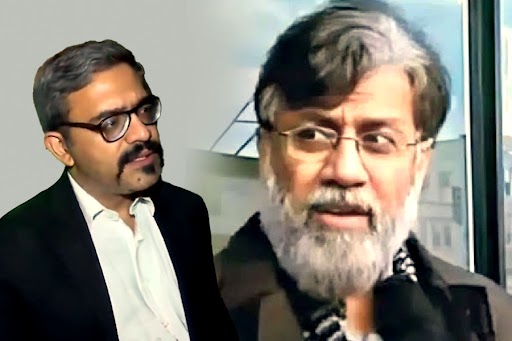 |
| Supriya Banerjee with M.F. Husain at Galerie 88 |
 |
| Nandita Das at the opening of her father Jatin Das’s ongoing exhibition at CIMA Gallery |
 |
| Rina Lath with Paritosh Sen at the KMOMA auction |
 |
| Sumitra Kejriwal with Vivan Sundaram at Chitrakoot Gallery in the 1980s. Picture by Suman Datta |
 |
| Jayashree Mohta, who heads Birla Academy of Art & Culture |
The 1980s were still the age of innocence. They had not tasted blood yet. In 1985-86, when Chitrakoot, the city’s first commercial gallery, had just started operating, artists who were yet to become stars of the Indian art mart, would drop by regularly if only for endless chats. Those days Sumitra Kejriwal led the charm offensive. Her husband, Prakash, was definitely there, but she was the gallery’s human face.
Over the years as the market in Indian contemporary art boomed, the gallery fell by the wayside. “In 1986-88, Shyamal Datta Roy went unsold at Rs 2,000-3,000. The same with Dharmanarayan Dasgupta. But it did not matter to them. The clientele was different. The market may be very good now, but we can’t enjoy ourselves any longer. Nobody has any time. We failed to keep pace in the race,” admits Sumitra.
She could not have been more true, for both artists as well as galleries, which have sprouted in every nook and cranny of the city, have developed the killer (survival) instinct. Unable to cope with the pressure some galleries have closed down almost overnight. Yet one factor remains unchanged. Most galleries are still run by women.
First lady
It all began with Lady Ranu Mookerjee, who for years was Calcutta’s culture czarina. Lady Ranu may have been a legendary beauty but she was a tough lady. At a time when no commercial galleries existed, no artist dared to get on her wrong side. The story of Dr BC Roy and Nehru entrusting her with the task of building the Academy of Fine Arts is well known.
As she grew older, control of Academy, as Calcuttans love to call it, slipped out of her hand. The annual show, in which the best talents from all over the country participated, later turned into a joke. Its vast infrastructure was damaged by internecine politics.
Being a picture of grace under pressure is becoming increasingly difficult. Art is serious business today, but most housewives-turned-gallery owners have learnt to take things in their stride. So someone as soft-spoken as Katayun Saklat, Katydi to innumerable young artists she has promoted, without a thought for profit, finds it difficult to survive. Her Gallery Katayun, one of the first to open in the city, is not as active as it used to be.
For the market is filled with hucksters and false gods. So long as your accoutrement is right you can make a killing. All one needs is some space, endless flow of cash and plenty of spunk. One need not know Jogen Chowdhury from Hemen Majumdar.
Boom & gloom
As Rakhi Sarkar, who heads CIMA Gallery, which opened in 1993 and is one of India’s most influential galleries today, says: “Lack of knowledge is jeopardising the art market. Knowledge is not percolating. A lot of purchasing is done on lack of information. Non-art is often highly valued. Pricing is erratic. Almost craft is being promoted as art. Galleries are not discriminating. They often display good works beside worthless ones. Large enterprises are backing this trend.”
Abroad, the market is stratified, she says. Each art has its own place there. Add to this the scourge of fakes. “There are more fakes than genuine works. Knowledge is lacking at every level,” stresses Sarkar.
With equal emphasis she points out the positive side of the boom. “Because of the lack of formal institutions one has to depend on private collectors and companies. It is a great thing that the market has played a vital role.”
She feels that the more galleries open the better it is for the art market. Thereby it expands. “We all gain from it. Gradually, specialised galleries are bound to be created,” says Sarkar.
Way back in 1986 Sarkar had curated the Visions exhibition. She used to be engaged in social projects then but artists felt the need for an art centre here. She learnt for some time how to run an art institution and then CIMA opened. From the onset, CIMA was meant to be a national gallery, although exclusive exhibitions on Bengal art have been organised.
Such is the pressure of the market that even as laidback an institution as the Birla Academy of Art & Culture, which opened in 1974, is pulling up its socks. Jayashree Mohta, who has been heading it for the past six years, says she would like to take shows to London and Dubai. Although Mohta says her father, B.K. Birla, regularly checks the accounts of Birla Academy to “invest wisely” and ensure that the institution is “financially sound”, she has already introduced some drastic changes in this byword for conservatism. Recently, Birla Academy hosted a successful exhibition of Baroda artists curated by art historian Shivaji K. Panikkar. Such professionalism was unheard of in the history of this institution, where the famous Rodin exhibition was once held.
Years ago, Supriya Banerjee used to help her husband with his advertising agency. She started visiting the Academy in the 1950s. Then with a little help from her husband and friends she opened Galerie 88. She may say that “It gives her immense joy to sit among new work without owning it”, but she is not to be underestimated. A near-riot had broken out outside her gallery when Madhuri Dixit was expected to turn up for M.F. Husain’s show.
The gallery space in Calcutta has expanded, and last year she opened Project 88 in a 150-year-old printing press at Colaba in Mumbai. Last year, she held a huge exhibition of Chittrovanu Mazumdar in London.
Passport & profit
Sudipta Sen opened Gandhara Art Gallery with the intention of collecting art with her own money. Now, “it is my identity-cum-profession.” Helping and encouraging artists to continue with their work matters more to her than making profits, she claims.
But one does make serious money in the art mart. Sanskriti Art Gallery had opened way back in 1990. “The gallery was the extension of a hobby. I learnt on the job. Artists were more accessible in those days,” says Ambica Beri. In 2005, Sanskriti reopened on brand-new premises. Apart from the two large halls already existing, Beri has acquired even more space to accommodate visiting artists.
Handling the clientele and artists is not enough to run a gallery today. One has to be tech-savvy as well. So Vikram Bachhawat depends on his wife, Priya. She takes all the photographs for Aakriti Art Gallery, edits these, looks after the website and hangs the paintings as well.
The youngest of all the ladies in the galleries has suddenly become one of the most prominent. At the Kolkata Metropolitan Museum of Modern Art auction, all heads turned towards her when Rina Lath bought the Ganesh Pyne. She may have been introduced to art by her father-in-law, Mukund Lath, but she has come into her own when it comes to looking after Aakar Prakar gallery. Her focus in on young artists. What does she feel about the proliferation of art galleries? “The more the merrier. The market is absorbing everything. No more monopolising. More competition. Greater opportunity for artists,” says Lath with a grin. Sure.
coming up Soon
![]() The Kolkata Metropolitan Museum of Modern Art, KMOMA in short, will be visually there in the next two years, says its managing trustee, Rakhi Sarkar. It will be functional in the next five years. All its activities such as restoration, training in art management, and authentication are being worked out with various galleries. But it will begin with small publications and exhibitions as soon as a bit of funds are available, adds Sarkar.
The Kolkata Metropolitan Museum of Modern Art, KMOMA in short, will be visually there in the next two years, says its managing trustee, Rakhi Sarkar. It will be functional in the next five years. All its activities such as restoration, training in art management, and authentication are being worked out with various galleries. But it will begin with small publications and exhibitions as soon as a bit of funds are available, adds Sarkar.
![]() KMOMA, the first joint sector project of its kind involving the state government, Calcutta Municipal Corporation, corporate sector, foreign governments and their subsidiaries like British Council and Max Mueller Bhavan, has taken a two-storey house on rent at Ballygunge Place. The process of selecting an architect is on. “Competitions are very expensive,” says Sarkar. Instead, an architectural committee has been set up.
KMOMA, the first joint sector project of its kind involving the state government, Calcutta Municipal Corporation, corporate sector, foreign governments and their subsidiaries like British Council and Max Mueller Bhavan, has taken a two-storey house on rent at Ballygunge Place. The process of selecting an architect is on. “Competitions are very expensive,” says Sarkar. Instead, an architectural committee has been set up.





